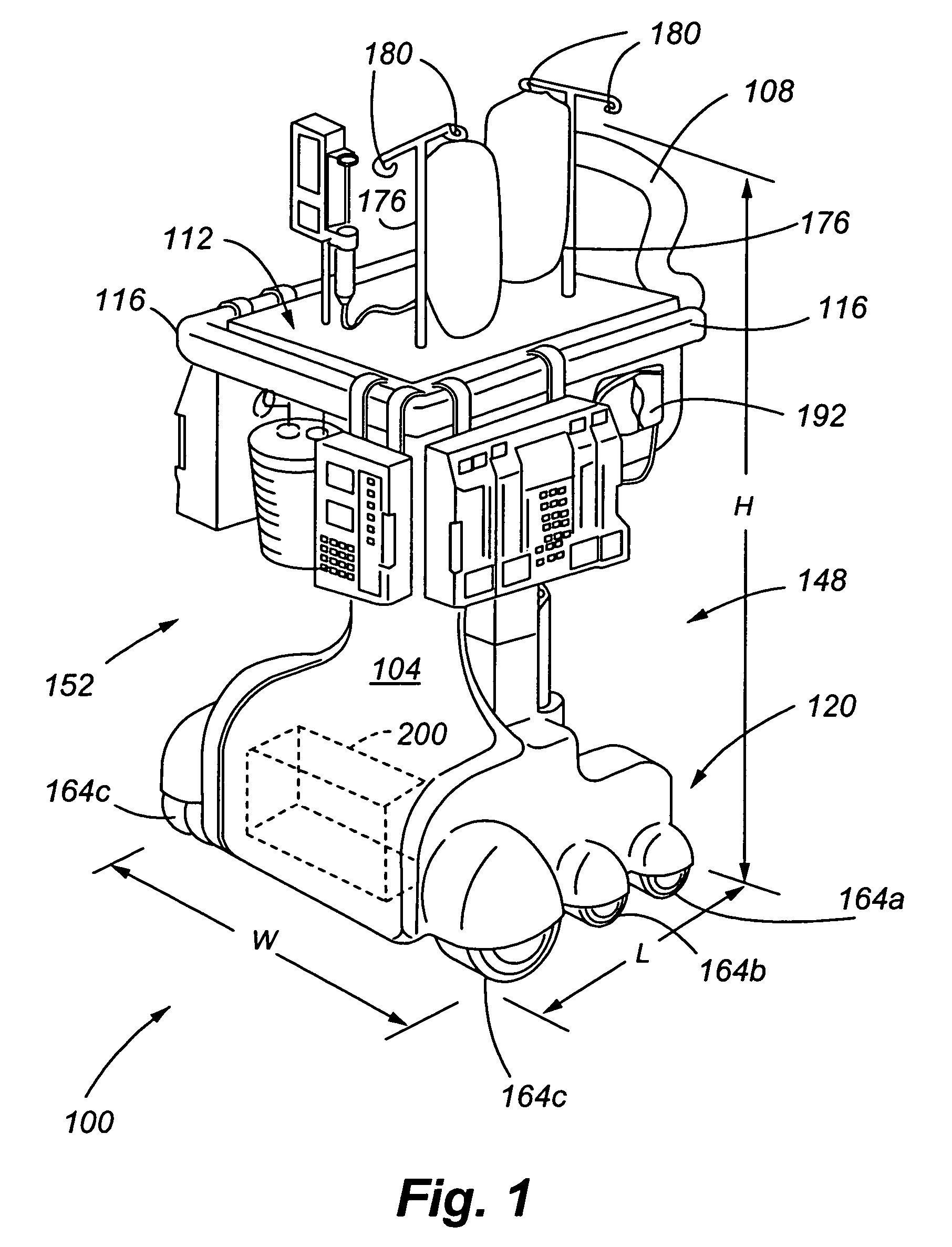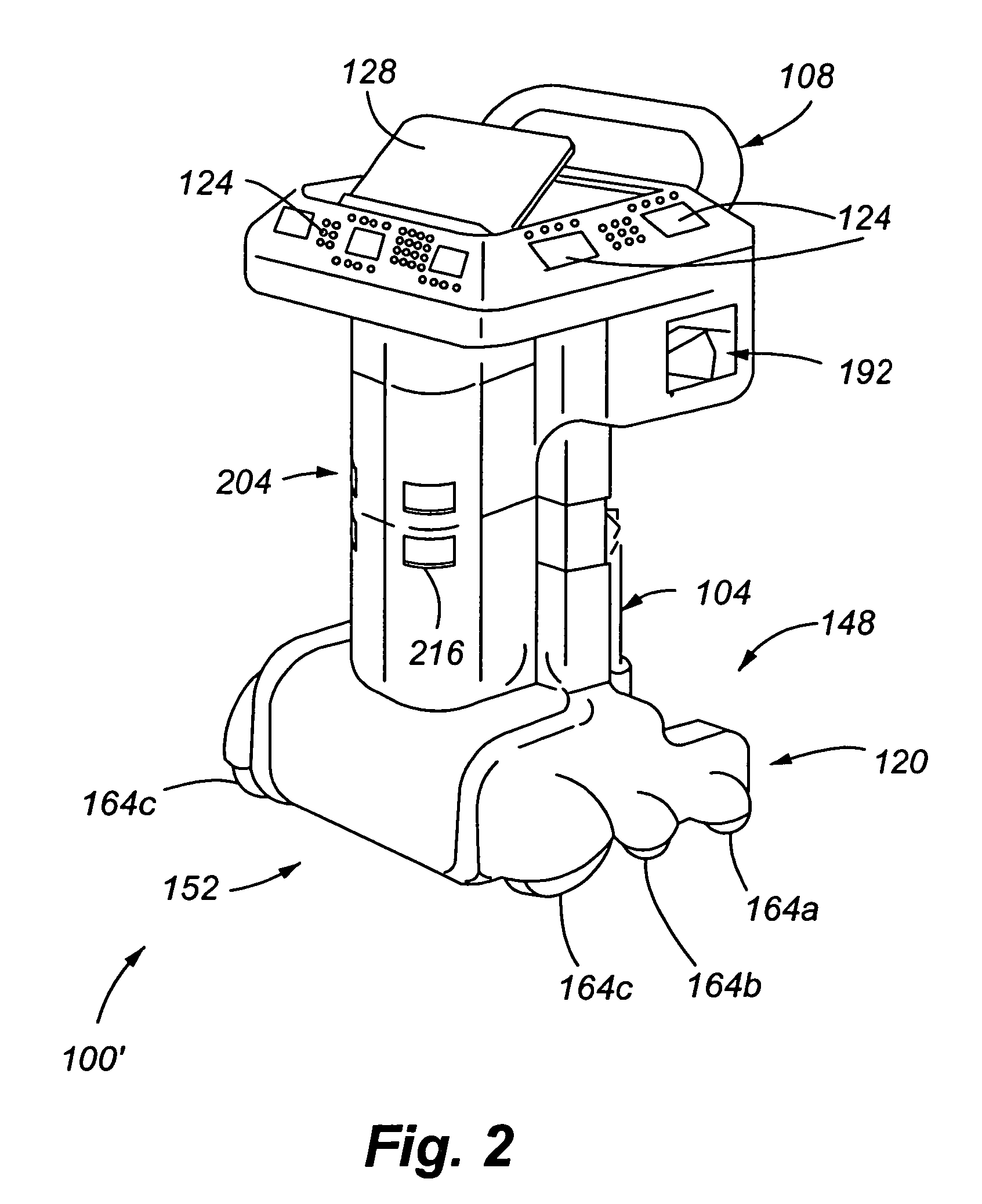Modular patient support system
a patient support system and modular technology, applied in the field of medicine, can solve the problems of increasing the patient's risk of deep vein thrombosis, pulmonary embolism and pneumonia, and the entanglement of myriad devices, and achieve the effects of reducing pneumonia, and increasing the risk of pulmonary embolism
- Summary
- Abstract
- Description
- Claims
- Application Information
AI Technical Summary
Benefits of technology
Problems solved by technology
Method used
Image
Examples
Embodiment Construction
[0075]In accordance with embodiments of the present invention, a platform is provided that has application for use in a variety of fields, one of which is in the field of health care. Various embodiments of the platform may include an ergonomic structure suited for a patient to use the platform as a walking aid. In addition, embodiments of the invention may also comprise structure for accommodating on-board health monitoring and / or treatment equipment. These and other features are described in detail below.
[0076]Referring now to FIG. 1, an apparatus constructed in accordance with an embodiment of the present invention is generally identified by reference numeral 100. Support platform 100 includes a chassis, support frame or body 104 having a platform handle 108 located at or near a top 112 of the platform 100. The platform 100 also includes a perimeter rail 116 at its top 112, wherein the perimeter rail 116 is adapted for receiving a variety of health monitoring, treatment, or maint...
PUM
 Login to View More
Login to View More Abstract
Description
Claims
Application Information
 Login to View More
Login to View More - R&D
- Intellectual Property
- Life Sciences
- Materials
- Tech Scout
- Unparalleled Data Quality
- Higher Quality Content
- 60% Fewer Hallucinations
Browse by: Latest US Patents, China's latest patents, Technical Efficacy Thesaurus, Application Domain, Technology Topic, Popular Technical Reports.
© 2025 PatSnap. All rights reserved.Legal|Privacy policy|Modern Slavery Act Transparency Statement|Sitemap|About US| Contact US: help@patsnap.com



